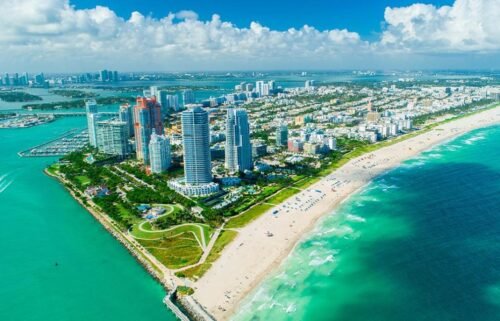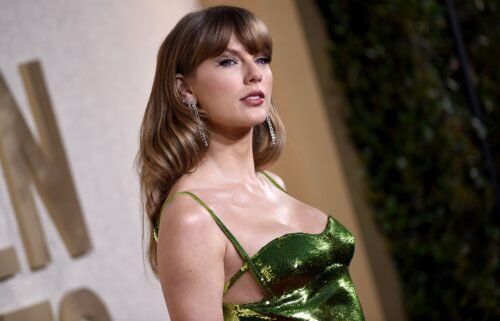As the Berlin Wall was falling, one artist concocted a plan to turn it into the world’s longest outdoor gallery

Kani Alavi, a young Iranian artist living in Germany, witnessed history as the Berlin Wall was falling, and crowds rushed to set foot on free soil.
From his fourth-floor apartment next to Berlin’s Checkpoint Charlie, his eyes took in images that would print onto his consciousness for a lifetime.
That day, East German officials had surprised the world by announcing they would no longer enforce the border between East and West Germany.
Everything had changed.
The Berlin Wall was 91 miles long and for nearly three decades, it was a metaphor for the division between the free world and communism.
But as people began pouring through a gap in the wall, Alavi began setting a plan in motion to actually preserve part of it.
His became an organizer of the East Side Gallery, which today is the longest section still standing, and tourists flock to the gallery wall. It’s become one of the most visited attractions in Germany’s reunited capital.
Alavi helped transform the most visible symbol of the Iron Curtain into an enduring monument to the power of freedom.
He organized artists from around the world
Alavi had moved to Berlin in 1980 to escape what he called an “inhuman dictatorship” in Iran.
Nearly a decade later, he was moved by thousands of East Germans he saw trying to escape their own situation, and wanted to use art to help tell their story.
“It was really difficult,” Alavi told CNN in an interview with the help of a translator at his Berlin apartment, which is also his art studio. “But there were so many artists around the world who just wanted to get involved with the project.”
“They came to Berlin and it just spontaneously developed.”
Perhaps the most famous image on the wall recreates a socialist fraternal kiss shared between East German leader Erich Honecker and Soviet premier Leonid Brezhnev in 1979.
That kiss symbolized an ideological bond between East Germany and the Soviet Union that had suppressed the dreams and aspirations of millions living under those regimes.
Words scrawled in Russian above the painting say, “My God, Help Me to Survive This Deadly Love.”
There are countless stories of the 118 artists from 21 countries who would splash paint across the once-austere concrete.
One story that sticks out in Alavi’s mind is of an artist who arrived from East Germany driving a Trabant, a car produced in the Communist part of the country by a government-run conglomerate.
Alavi told the woman, Birgit Kinder, to paint whatever she pleased. She was hesitant, not used to having the freedom to choose. She said she couldn’t think of anything.
But Alavi says she looked back at her prized car, and looked back at the wall. She got to work.
She painted an icon: her Trabant barreling through the wall, and smashing through communism itself.
Alavi’s own contribution to the East Side Gallery is from his memory of November 9, 1989, as he saw masses coming through the wall at the Checkpoint Charlie border crossing.
His painting, “It Happened in November,” depicts a swarm of faces yearning to breathe free as they poured through a gap in the barrier.
It would become his own most enduring piece of art.
Today if you come back with him to his studio you can see evidence he’s constantly re-creating that image, riffing off his personal depiction of the moment that changed the world.
He founded an organization to preserve the wall
In Alavi’s mural, one man’s face stands out. That man, wearing a hat and a mustache, is the most arresting visage in a sea of anonymous faces.
Alavi painted Jörg Weber’s face onto his mural when he restored the painting on the wall.
The two men founded East Side Gallery e. V., an artists’ initiative that preserves the works. And they wrote a book about the East Side Gallery together.
They fought to preserve .8 miles of the wall, turning the rampart into the longest open-air art gallery in the world.
Alavi was awarded the Merit Medal of Germany’s Order of Merit, the country’s highest civilian commendation.
But the fight to preserve the gallery in its original form requires constant attention.
In a new era of capitalism, Alavi had to fight real estate developers enticed by the space, who covet permits to build along the gallery wall.
In a formerly dreary neighborhood of East Berlin, freedom has now wrought a skyline dominated by a major stadium, Mercedez-Benz Arena, and various high-rise condo buildings.
A symbol of oppression became a tribute to freedom
Alavi says the purpose of the East Side Gallery is as relevant today as ever, and that the still enduring wounds from Germany’s divisive wall should serve as a warning to other nations.
“I wanted to make this for posterity so that no other crazy people come along and want to build another wall,” he said.
“In Iran I saw that people had walls in the heads,” he continued. “And then I came to Germany and saw the same thing here. I wanted to use art to show that there’s another way of doing things, to show that things could be done without walls.”
Recently, he accompanied South Korean President Park Geun-hye, when she walked along the East Side Gallery wall.
He’s been giving South Korean officials his two cents as they contend with a similar issue: the demilitarized border that separates North and South Korea.
‘Walls are not what the world needs’
In 2002, a portion of the Berlin Wall that Alavi painted was put on display on the United Nations grounds in New York City, as a gift from Germany.
In 2017, the artist who holds Iranian and German citizenship, spoke to German outlet Deutsche Welle about that painting as US President Donald Trump was taking office in the US and setting up the travel ban he campaigned on.
“When I think about the possibility of not being able to go there and see my painting after many years, I wonder why I painted it in the first place,” Alavi said. But he added that if Trump succeeded in building a wall on the southern border, he’d try to find a way to paint that wall too.
“These are all political games to talk about building walls and hopefully one day they will realize it doesn’t make any sense,” he said.
He’s repeatedly tried to invite President Trump to the East Side Gallery.
“Walls are the wrong way to go,” Alavi said. “I hope that Trump will figure out that walls are not what the world needs.”



